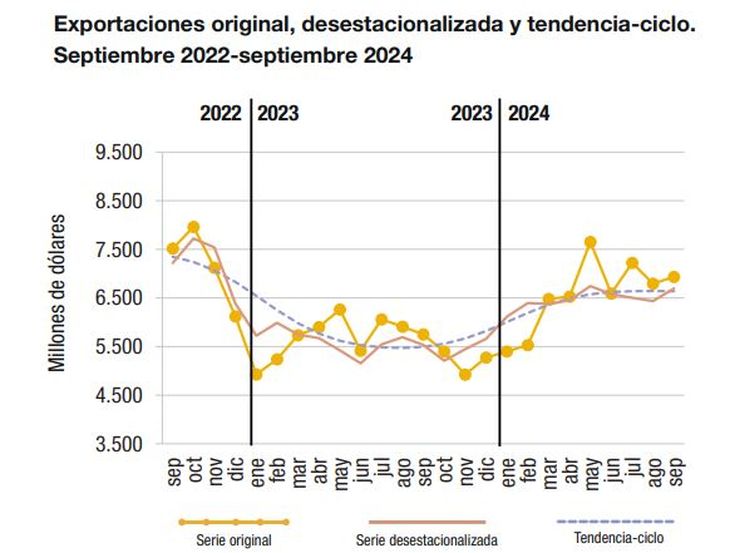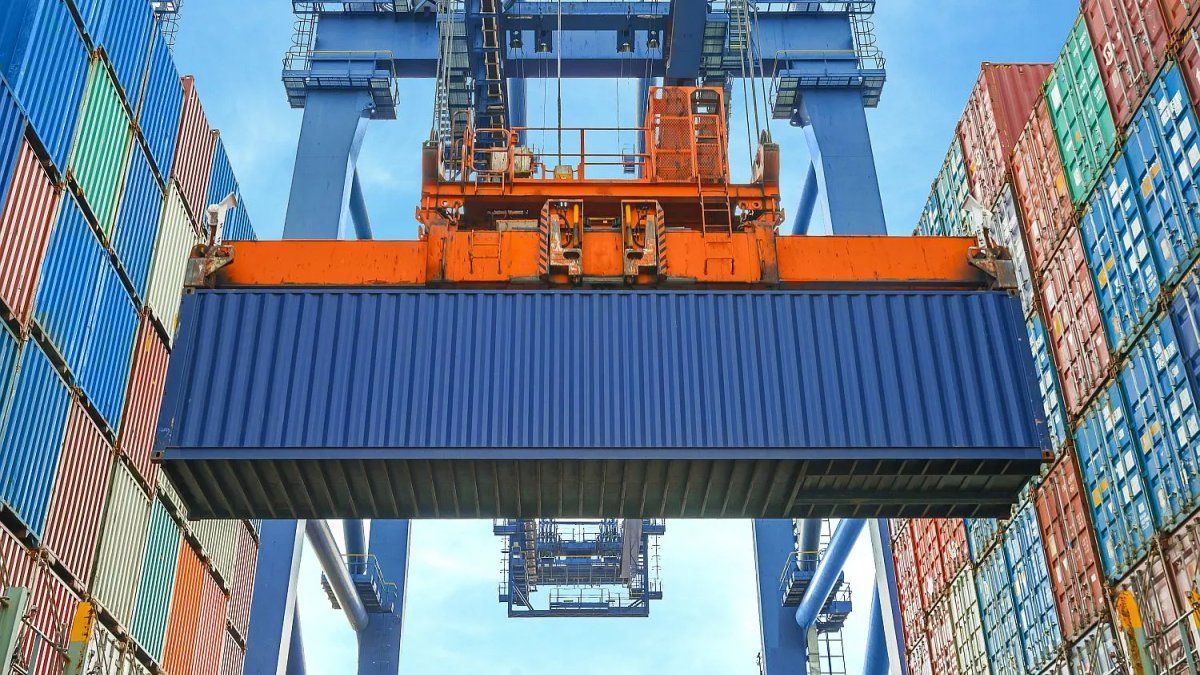Argentina registered a trade surplus of US$981 million in september, the lowest figure since January. Imports recorded their smallest negative variation since Javier Milei became presidentlargely due to the reduction in the PAIS Tax that had delayed purchases that could have been made in the previous month.
According to data released this Friday by INDEC, Imports totaled about US$5,954 million in the ninth month of the year, 8.8% less than in September 2023. It is worth remembering that the average year-on-year drop was close to 25% in the government months of the current administration.
INDEC.JPG Imports
Capital goods (BK), their parts (PyA), and intermediate goods (BI) explained almost 80% of external purchases. In the case of BI, the year-on-year decrease was only 2.5%.
On the other hand, heThe foreign acquisition of consumer goods (BC) showed its first increase since October 2022. “The import of finished goods corresponds to large companies that are substituting local production with imports“he explained about it Federico VaccarezzaPhD candidate in International Relations at the University of La Plata.
In the same vein, Daniel Schteingartdirector of Productive Planning at Fundar, also warned that from now on we can begin to see a greater weight of imported products over the total products sold in the local marketin line with the logic of commercial openness advocated by the current management. This is already seen in the automotive industry, where this “share” went from 15% to 50% in recent months.
The largest annual decline was observed in the fuels and lubricants (CyL) segment. At the product level, The main contractions were those of diesel and natural gas: between both fuels they represented a saving of US$205 million compared to the same month last year.
The effect of the reduction in the COUNTRY Tax
He cut of ten percentage points in the COUNTRY Taxwhich came into effect last month, decreased the cost of bringing products from abroad. Because the measure had been previously announced, Many companies decided to wait for it to materialize to carry out their commercial operations.
Schteingart He pointed out that he saw a “strong” monthly rise in external purchases, in seasonally adjusted termsand that this “most likely” was due to the aforementioned postponed operations and a “lukewarm” recovery of activity.
Soybeans and oil boosted exports
On the side of the exports, In September the total rose to US$6,934 milliona 20.6% above the value of a year ago. The increase was the highest in the last three months.
INDEC.JPG Exports

Segmented by economic use, the increase was driven by the jumps in sales of manufactures of agricultural origin (MOA) and the energy sector (CyE). Particularly noteworthy were the increased shipments of soybean oil (and its derivatives) and petroleum.: between these two items they generated a additional contribution of more than US$700 million versus twelve months ago.
“The energy balance is changing very strongly. Vaca Muerta begins to bear fruit“Schteingart highlighted in this regard.
For his part, Vaccarezza stressed that “The energy surplus occurs partly due to the increase in local production based on the maturation of projects started in 2022 and 23 and partly due to the fall in local demand“.
Regarding sales in the agricultural sector, the specialist recalled the low comparison base due to the 2023 drought. “Last year’s harvest lost US$20 billion due to the drought. It is not growth, it is a rebound,” he asserted.
With these numbers, The trade balance in the accumulated of the first nine months of 2024 rose to US$15,075 million.
ICA 2024 INDEC.JPG

Deficit with main trading partners, surplus with the rest
Regarding the main trading partners, Brazil remained in the lead. The salient data from the bilateral exchange was that a deficit of US$151 million was recorded, the highest in the Milei era.
They completed the podium, without changes compared to previous months, China and USA. In the first case the commercial “red” was high (-$956 million), while in the second it was much more limited (-$17 million).
The most relevant bilateral surpluses were seen in trade with other South American countries (mainly Chile and Peru) and with other Asian countries (with Vietnam and India in the lead). At the same time, the balance with the member countries of the European Union was slightly positive. Specifically, it is worth highlighting the case of Chiliwhere the energy sector promoted a favorable balance of US$547 million
Source: Ambito
I am an author and journalist who has worked in the entertainment industry for over a decade. I currently work as a news editor at a major news website, and my focus is on covering the latest trends in entertainment. I also write occasional pieces for other outlets, and have authored two books about the entertainment industry.



